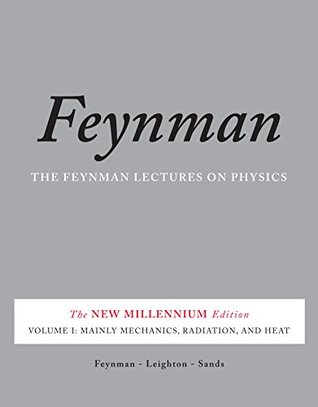More on this book
Kindle Notes & Highlights
Read between
November 15, 2015 - February 4, 2021
The simplest change to observe in a body is the apparent change in its position with time, which we call motion.
In the first place, what do we mean by time and space?
We shall, therefore, take a simple point of view about time and space. We know what these concepts are in a rough way, and those who have driven a car know what speed means.
Speed
A balloon is being inflated so that the volume of the balloon is increasing at the rate of cm³ per second; at what speed is the radius increasing when the volume is cm³?
That idea was to take an infinitesimal distance and the corresponding infinitesimal time, form the ratio, and watch what happens to that ratio as the time that we use gets smaller and smaller and smaller. In other words, take a limit of the distance travelled divided by the time required, as the time taken gets smaller and smaller, ad infinitum.
Calculus was invented in order to describe motion, and its first application was to the problem of defining what is meant by going “ miles an hour.”
We want to find out exactly how fast.
Speed as a derivative
The quantity which we found above is called the “derivative of with respect to ”
Distance as an integral
The true is
Acceleration
Acceleration is defined as the time rate of change of velocity.
Newton’s Laws of Dynamics
Momentum and force
the principle of inertia: if an object is left alone, is not disturbed, it continues to move with a constant velocity in a straight line if it was originally moving, or it continues to stand still if it was just standing still.
The First Law was a mere restatement of the Galilean principle of inertia just described. The Second Law gave a specific way of determining how the velocity changes under different influences called forces. The Third Law describes the forces to some extent,
the time-rate-of-change of a quantity called momentum is proportional to the force.
We use the term mass as a quantitative measure of inertia,
the momentum of an object is a product of two parts: its mass and its velocity.
we shall start out with the Newtonian approximation that mass is constant, the same all the time, and that, further, when we put two objects together, their masses add.
As a rough approximation we think of force as a kind of push or pull
Newton’s Second Law says more than that the effect of a given force varies inversely as the mass; it says also that the direction of the change in the velocity and the direction of the force are the same.
The velocity of a moving object can change by its speeding up, slowing down (when it slows down, we say it accelerates with a negative acceleration), or changing its direction of motion.
Thus it takes only two minutes to follow Jupiter around the sun, with all the perturbations of all the planets correct to one part in a billion, by this method!
Conservation of Momentum
Newton’s Third Law
Suppose we have two small bodies, say particles, and suppose that the first one exerts a force on the second one, pushing it with a certain force. Then, simultaneously, according to Newton’s Third Law, the second particle will push on the first with an equal force, in the opposite direction; furthermore, these forces effectively act in the same line.
The principle of conservation of momentum is very useful, because it enables us to solve many problems without knowing the details.
Vectors
11–1 Symmetry in physics
Professor Hermann Weyl has given this definition of symmetry: a thing is symmetrical if one can subject it to a certain operation and it appears exactly the same after the operation.
11–2 Translations
where do we put the origin?
That means that there is no unique way to define the origin of the world, because the laws will appear the same, from whatever position they are observed.
Since the equations are the same, the phenomena appear the same. So the proof that an apparatus in a new position behaves the same as it did in the old position is the same as the proof that the equations when displaced in space reproduce themselves. Therefore we say that the laws of physics are symmetrical for translational displacements, symmetrical in the sense that the laws do not change when we make a translation of our coordinates.
Rotations


